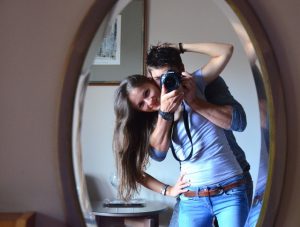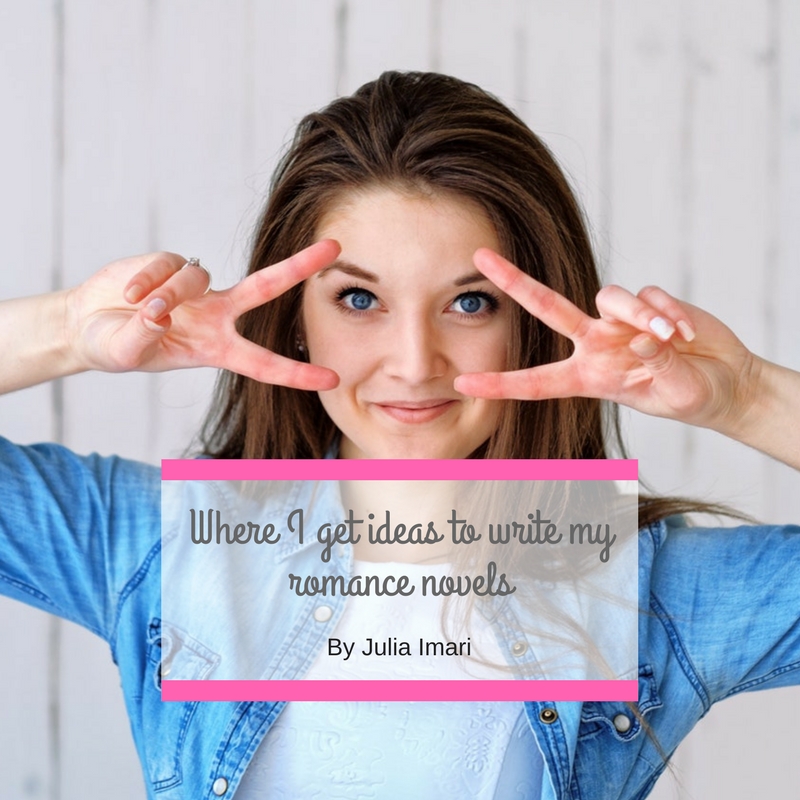Where I get ideas to write my romance novels
It’s a secret and nobody knows, except me. I’m just kidding. The ideas I use in writing my romance novels come from two sources: primary and secondary.
Primary sources
My own experiences

Almost everyone has experienced how it feels to fall in love while still in school. When I was fourteen years old, I had a huge crush on my best friend. Sound familiar? I’m sure as a teen you had fallen head over heels for someone in your class. My crush was a popular, gorgeous, friendly and fun guy to be around. Unfortunately, I wasn’t the only one who clamored for his attention—all girls in my grade competed to be his girlfriend.
We became best friends, and when he chose one of my friends to be his girlfriend, I was surprised. No, I was devastated. But I wished him the best. Then, we lost contact when he transferred to a different school. Fast forward, he contacted me via social media after twenty years. And when we talked, it felt like nothing had changed at all.
So, when I had the chance to see him face-to-face, we both laughed like it was the old times. Then, he surprised me with his confession. “You were actually more than a best friend, but I was afraid to tell you.”
“Why?” I asked.
He rolled his eyes, like best friends always do when they banter. “What did you expect from a fourteen-year-old kid?” he replied.
We both laughed. His answer washed away my negative assumption about him all these years—like how could he be so blind to not see that I had a crush on him. “I was surprised you chose her to be your girlfriend,” I said.
“Please,” he pushed his palms forward as if to ward-off the pain from what I’d said, “don’t remind me. I was stupid. I broke up with her several months afterward.”
Meeting and getting an honest answer from him put closure to a question the fourteen-year-old in me had carried. Today, as an adult, he’s no longer a crush, but the fourteen year old in me cherished the memories of our friendship. He’s still and forever a best friend.
Why do I tell you this? Because this is a critical point—in my preparation to create and breath life into my fictional characters. All the pain of a broken heart, and the joy of falling in love, helps me to infuse emotions into my heroes and heroines. I had to experience the emotions firsthand in order to create realistic characters. By drawing upon my own experiences, I can make my characters empathetic, believable and hence, make the readers root for them.
I came across a question like this in a writing forum, “How can I make my hero/heroine fall in love when I’ve never experienced it myself?”
Well, it’s tough to put authentic feelings into your characters if you’ve never experienced those feelings. But, don’t worry; you can always use a secondary source.
Secondary sources
My observations and sensory input
As an author, I’m an avid observer of all things that unfold around me. For instance, I take notice of a couple in a restaurant starting a fight, a couple in a movie theater murmuring sweet nothings, a couple sauntering in the park, holding hands, etc. I watched their mannerisms discreetly and transferred these observations into my characters—granting that was what my hero or heroine needed to do, as per the scene I created.
I use all my senses—what I see, hear, smell, taste and feel in making my observations. I had collected a lot of data for one of my stories when I was waiting for a train, walking into a shopping mall, etc.
I wrote my latest novel, Their Secret Rendezvous, based on golf balls my husband found on the golf course. One of them had a written a motivational quote in it. This unique motivational quote ignited the fire of creativity in me to write the story.
You can read Their Secret Rendezvous and figure out the combination of these two sources I have used. But, I prefer you just enjoy Ryan’s and Lauren’s journey in reaching their Forever.
PC: By Pixabay (pexels.com)


